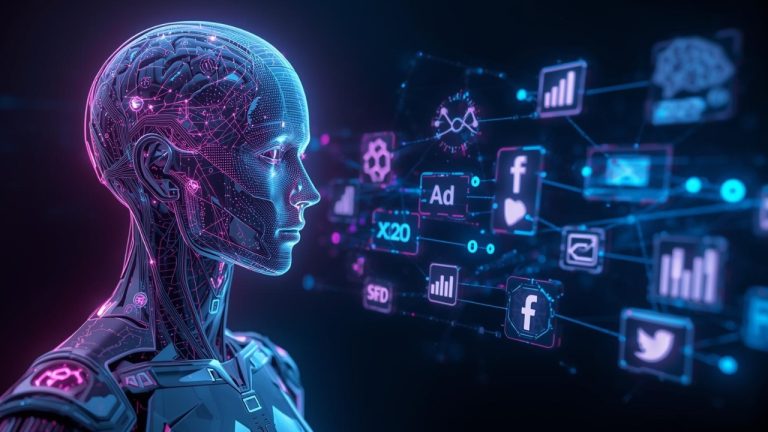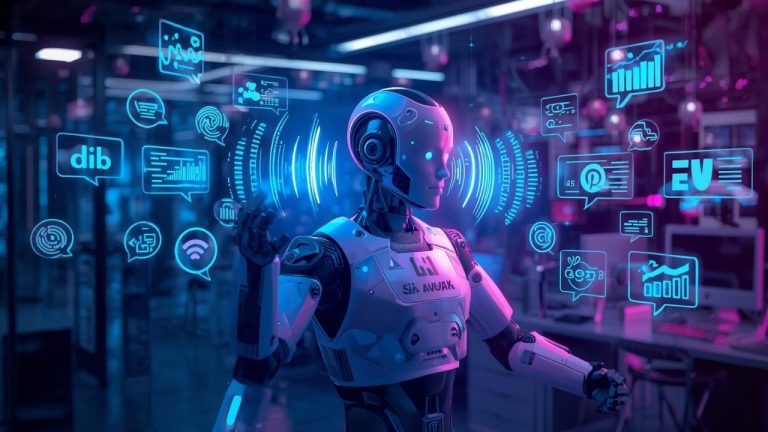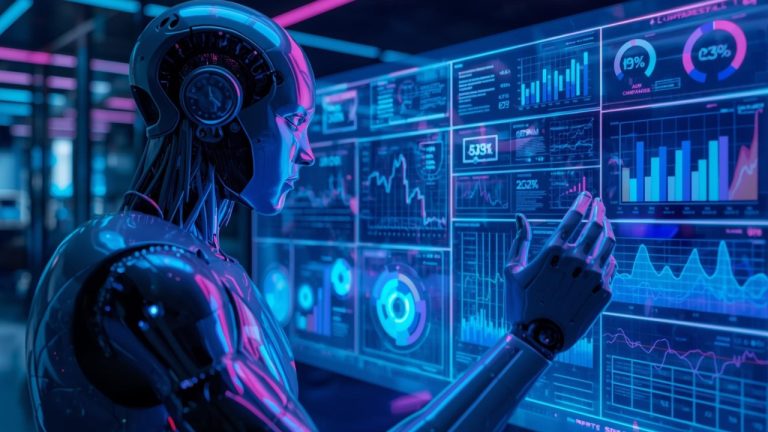
In today’s competitive digital landscape, a website’s success depends not only on attracting visitors but also on keeping them engaged. High bounce rates, where users leave a site after viewing only one page, are a major concern for marketers, web designers, and business owners. A high bounce rate often signals poor user experience (UX), irrelevant content, slow page load times, or difficult navigation.
Artificial Intelligence (AI) is rapidly transforming the way businesses approach user engagement and experience. By analyzing visitor behavior, predicting intent, and personalizing interactions, AI can reduce bounce rates and create seamless, enjoyable experiences for website visitors. This article explores the ways AI can enhance UX, the technologies involved, and actionable strategies to optimize your website for engagement and conversions.
- Understanding Bounce Rate and UX
- Bounce Rate
Bounce rate measures the percentage of visitors who leave a website after viewing only a single page. Common causes include:
- Slow loading times
- Unclear or unappealing content
- Poor navigation
- Irrelevant landing pages
- Lack of interactive or engaging elements
A high bounce rate can negatively impact conversion rates, search engine rankings, and overall user satisfaction.
- User Experience (UX)
UX refers to how visitors perceive and interact with a website, including navigation, content readability, design, responsiveness, and overall satisfaction. Improving UX is key to retaining users, encouraging engagement, and guiding them toward desired actions such as completing a purchase, subscribing, or filling out a form.
AI bridges the gap between visitor behavior and effective UX design by offering real-time insights, personalization, and predictive optimizations.
- How AI Analyzes User Behavior
AI can monitor and interpret visitor behavior in ways that go far beyond traditional analytics. Key capabilities include:
- Tracking Interaction Patterns
AI can analyze click patterns, scroll depth, time on page, and mouse movements to understand how users engage with content. For example, it can identify which sections are ignored or which buttons receive the most clicks.
- Predicting Intent
Machine learning algorithms can predict visitor intent based on historical behavior and contextual data. For example, AI can determine whether a visitor is browsing casually, researching a product, or ready to make a purchase.
- Identifying Friction Points
AI can detect friction points that cause users to leave, such as confusing navigation, slow-loading elements, or poorly placed CTAs. By identifying these barriers, AI provides actionable insights to improve UX.
- Segmenting Visitors
AI can automatically segment visitors based on demographics, location, device type, and behavior patterns. This segmentation allows businesses to deliver targeted, relevant experiences to each visitor group.
- AI Techniques to Reduce Bounce Rate
Several AI-driven techniques can directly impact bounce rate and enhance UX:
- Personalization
Personalization is one of the most effective ways to keep visitors engaged. AI can:
- Display content tailored to user preferences or past behavior
- Recommend products, articles, or services based on visitor history
- Adjust landing pages dynamically to match visitor interests
Personalized experiences make users feel valued, increasing engagement and reducing bounce rates.
- Predictive Content Delivery
AI can predict which content or products a visitor is likely to find engaging and serve it proactively. For instance, a blog page may dynamically show related posts that match the visitor’s interests, encouraging them to explore more pages.
- AI-Powered Chatbots
Chatbots can provide instant support, guide navigation, and answer questions, reducing frustration and preventing users from leaving. Conversational AI can also collect data about visitor needs, helping improve future interactions.
- Dynamic User Interface (UI) Adjustments
AI can monitor user behavior in real time and make dynamic adjustments to layout, menus, and interactive elements. For example, AI might highlight popular sections, simplify navigation, or resize buttons based on device type and user behavior.
- Content Optimization
AI tools can evaluate which headlines, images, or text resonate most with specific user segments. By continuously testing and optimizing content, AI ensures that visitors see relevant, engaging material, reducing the likelihood of bounce.
- AI-Powered UX Improvements
AI can enhance UX in multiple dimensions, making websites more intuitive, engaging, and responsive:
- Faster Load Times
AI can identify performance bottlenecks, predict traffic spikes, and optimize page load times. Faster-loading websites keep users engaged and reduce the chances of leaving due to delays.
- Smart Navigation
AI can create adaptive navigation menus based on user behavior, showing the most relevant links and simplifying the user journey. Dynamic menus make it easier for visitors to find what they need without frustration.
- Adaptive Design for Devices
AI can detect the device and screen size of each visitor, automatically adjusting layouts, font sizes, and interactive elements. This ensures a seamless experience across desktops, tablets, and smartphones.
- Automated A/B Testing
AI can run continuous A/B tests on headlines, images, CTAs, and layouts. By automatically implementing the highest-performing variations, AI optimizes UX in real time without requiring manual intervention.
- Predictive Error Prevention
AI can anticipate potential user errors, such as incorrect form entries or abandoned carts, and offer solutions proactively. For example, a chatbot might prompt users to correct a form field before submission, reducing frustration and bounce likelihood.
- Benefits of AI-Driven Bounce Rate Reduction
Implementing AI to improve UX provides multiple benefits:
- Higher Engagement
Personalized and relevant experiences encourage users to explore more pages, interact with content, and spend more time on the site.
- Increased Conversions
Reducing bounce rates naturally leads to higher conversion rates, as engaged visitors are more likely to complete desired actions.
- Better Customer Insights
AI collects data on user behavior, preferences, and interactions, providing actionable insights that can inform future marketing, design, and content strategies.
- Enhanced Brand Reputation
A smooth, engaging, and responsive website reflects positively on the brand, improving trust and credibility.
- Cost Efficiency
By reducing bounce rates and improving UX, AI minimizes the cost per acquisition, as more visitors convert without requiring additional marketing spend.
- Implementing AI for UX and Engagement
To effectively use AI for reducing bounce rates and enhancing UX, follow these steps:
Step 1: Set Clear Goals
Identify what you want to achieve, such as lowering bounce rate, increasing session duration, or improving conversion rates. Clear goals guide AI implementation and measurement.
Step 2: Gather Visitor Data
Collect historical and real-time data on visitor behavior, engagement metrics, and interaction patterns. Ensure data quality for accurate AI predictions.
Step 3: Choose the Right AI Tools
Select AI platforms that offer predictive analytics, personalization, behavioral tracking, and chatbot integration. Integration with your website and CMS is critical for seamless functionality.
Step 4: Personalize Content
Use AI to deliver dynamic content, product recommendations, and tailored messaging that resonates with each visitor.
Step 5: Optimize Navigation and UI
Implement AI-driven adaptive navigation, dynamic menus, and responsive layouts to simplify user journeys.
Step 6: Monitor, Test, and Iterate
Continuously track metrics like bounce rate, session duration, and page interactions. Use AI insights to refine content, design, and engagement strategies over time.
- Challenges and Best Practices
While AI can significantly reduce bounce rates, there are challenges to consider:
Challenges
- Over-personalization can confuse or overwhelm users
- Data privacy concerns must be addressed, especially under regulations like GDPR and CCPA
- Poorly implemented AI may provide irrelevant recommendations
Best Practices
- Start with high-priority pages for AI personalization
- Use AI insights to complement, not replace, human UX expertise
- Maintain transparency about data collection and AI usage
- Continuously monitor performance and adjust AI models for accuracy
- Segment users for targeted personalization without overcomplicating experiences
- Future of AI in UX Optimization
The future of UX is intelligent, predictive, and adaptive:
- Predictive UX: AI will anticipate user intent and serve content or recommendations proactively.
- Voice and Visual Interaction: AI will optimize experiences for voice searches and visual navigation.
- Cross-Platform Personalization: AI will provide seamless UX across websites, apps, and other digital touchpoints.
- Real-Time Learning: AI will continuously analyze visitor behavior and adapt UX elements dynamically to maximize engagement.
Businesses that embrace AI for UX today will gain a competitive edge, creating websites that delight visitors, reduce bounce rates, and drive higher conversions.
- Conclusion
Bounce rate and user experience are closely linked. High bounce rates often indicate poor engagement, irrelevant content, or difficult navigation, all of which can harm conversions and brand perception. AI offers powerful solutions to these challenges, from predictive analytics and personalization to dynamic UI adjustments and chatbots.
By leveraging AI, businesses can:
- Analyze visitor behavior in real time and predict intent
- Deliver personalized content and recommendations
- Optimize navigation, layouts, and UI for seamless interaction
- Proactively prevent user errors and guide visitors
- Continuously test and improve page elements for maximum engagement
AI transforms websites into intelligent, adaptive platforms that keep visitors engaged, enhance UX, and reduce bounce rates. As AI technology advances, the potential for smarter, more personalized, and frictionless digital experiences will only grow. Businesses that adopt AI-driven UX strategies today will maximize engagement, conversions, and long-term customer satisfaction.
Investing in AI for UX is not just a trend—it’s a strategic imperative for any business aiming to stay competitive in the digital era.







